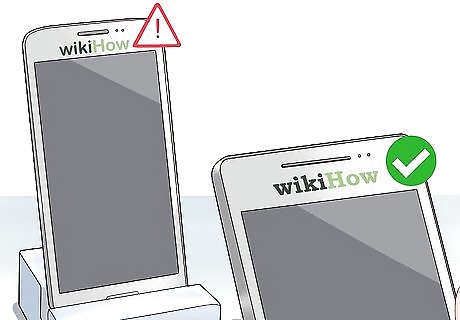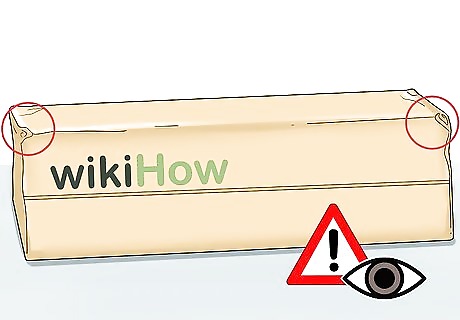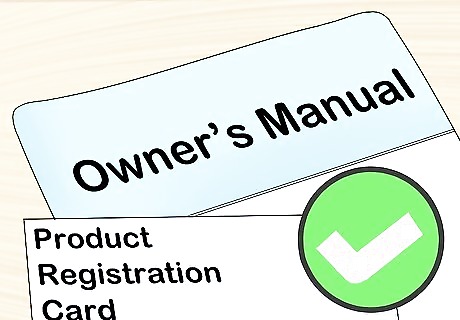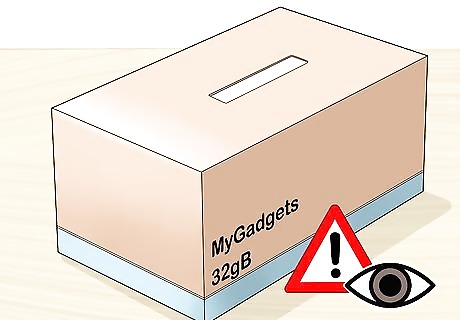
views
Suspicious Pricing or Design

Shop from reputable businesses. Whether you’re shopping in-person or online, you can safely avoid the risk of counterfeit goods by only purchasing from well-known, established retailers. Temporary, unknown, or suspicious businesses are more likely to sell counterfeits—even if they display manufacturer logos on their storefront or website. For example, while you’re guaranteed to find real Apple products at the Apple store, you may not find the genuine article at a temporary mall kiosk. If you’re not certain if a business is legitimate or not, search for the business name online. Nearly all genuine businesses have a website. Next, look for user reviews: if others are calling the products and goods “fake,” or “a rip-off,” you can be certain they’re counterfeit. When in doubt, avoid a potentially shady business.
Beware of deals that are too good to be true. Not all fakes sell at lower prices than their genuine counterparts, but an unreal bargain is one of the surest signs of a counterfeit product. Ask yourself how someone can sell, for example, a brand new $140 tool for $50. Chances are, it's because the product is a fake.

Compare a suspected counterfeit to the genuine item. Odds are you purchase many of the same products or brands over and over again. Pay attention to the look and design of similarly-branded products that you already own. This will make you better at spotting a counterfeit, because you'll have something to compare it to. Look for any deviations in the workmanship and in the text on the item, either the copy or the font and text placement. If you're purchasing a brand that is new to you or a product that you don't frequently buy, compare it to the same product at other stores.
Poor Quality Product or Packaging

Inspect the packaging carefully. Reputable businesses typically take great care in packaging their products. Beware flimsy packaging, packaging with substandard printing or running colors, or packages that appear to have been opened. In addition, take a moment to actually read the package. Spelling or grammatical errors are common on the packaging for counterfeit goods.
Check the quality of the workmanship. Beware products that seem flimsy or are obviously poorly made. Quality control is often absent in counterfeiting operations, so you may be able to spot a counterfeit simply based on its workmanship. Of course, even if it isn't a counterfeit, you’d still do well to avoid purchasing a poorly-made product. Check for things like: Items made with flimsy plastic instead of metal. Stickers or decals instead of paint. Poor-quality stitching on clothing goods, handbags, and shoes.

Check if the packaging matches the product inside. Open the box or bag and make sure that the item advertised on the packaging is what's inside. Some careless counterfeiters will try putting a fake drill, for example, in a box for a saw. Unfortunately, errors are rarely this obvious. Check model numbers on the packaging against the model number of the equipment, and carefully examine tags on clothing.

Confirm that correct supplementary materials are included. Make sure everything that should be inside the product packaging is' there. Counterfeit products often don't include supplementary materials, such an owner's manual or a product registration card. Sometimes they don't even include all the parts that should come with the product, or some parts will be from a different manufacturer. For example, if you're buying electronics, check to make sure that the packaging includes a power cord, assembly and warranty paperwork, and other relevant small items. Televisions should come with a remote control, and many desktop computers come with a mouse.
Fake Labels and Errors

Treat very plain boxes with suspicion. A box with suspiciously few images or text blocks on it is likely counterfeit. Most product labels and boxes (or other packaging) have a whole host of information printed on them, from bar codes and trademark and patent information to recycling symbols. Counterfeiters often don't want to spend the time to reproduce every detail, so they'll likely leave some of this stuff off. Also look for manufacturer contact information. Most reputable companies will provide a phone number or at least an address at which consumers can call them.

Look for a "Made in China" tag on high-end products. China is the source of most counterfeit products. Of course, many legitimately produced products are also made in China, but a "Made in China" sticker on an already suspicious product is a red flag. You should also be suspicious if no country of origin is listed on either the packaging or the product itself. Counterfeiting rings will sometimes remove a "Made in China" sticker when importing fake products, and producers of counterfeits will sometimes simply leave off the country of origin designation.

Look for a safety certification label on electrical products. Just about any product that could pose some sort of safety risk will have one or more safety certifications on its label. Some counterfeiters products may omit a safety certification label altogether, while others will often include fake marks on their products. The UL (Underwriters Laboratory) label is the most common safety certification, particularly in the U.S. (the competing ETL mark is also a major certification in the U.S.). In Europe, the CE (the abbreviation doesn't officially stand for anything) marking is required on electrical products, and in Canada the CSA (Canadian Standards Association) mark is common. Look for at least one of these marks on electrical products. Low-quality products that don't claim to be brand-name may also simply use a counterfeit certification mark. Faked marks are usually, but not always, easy to spot. UL requires hologram marks for most products from China and for some products regardless of country of origin. If the certification mark is present only on the packaging, but not on the product itself, there's a good chance the product is fake.



















Comments
0 comment